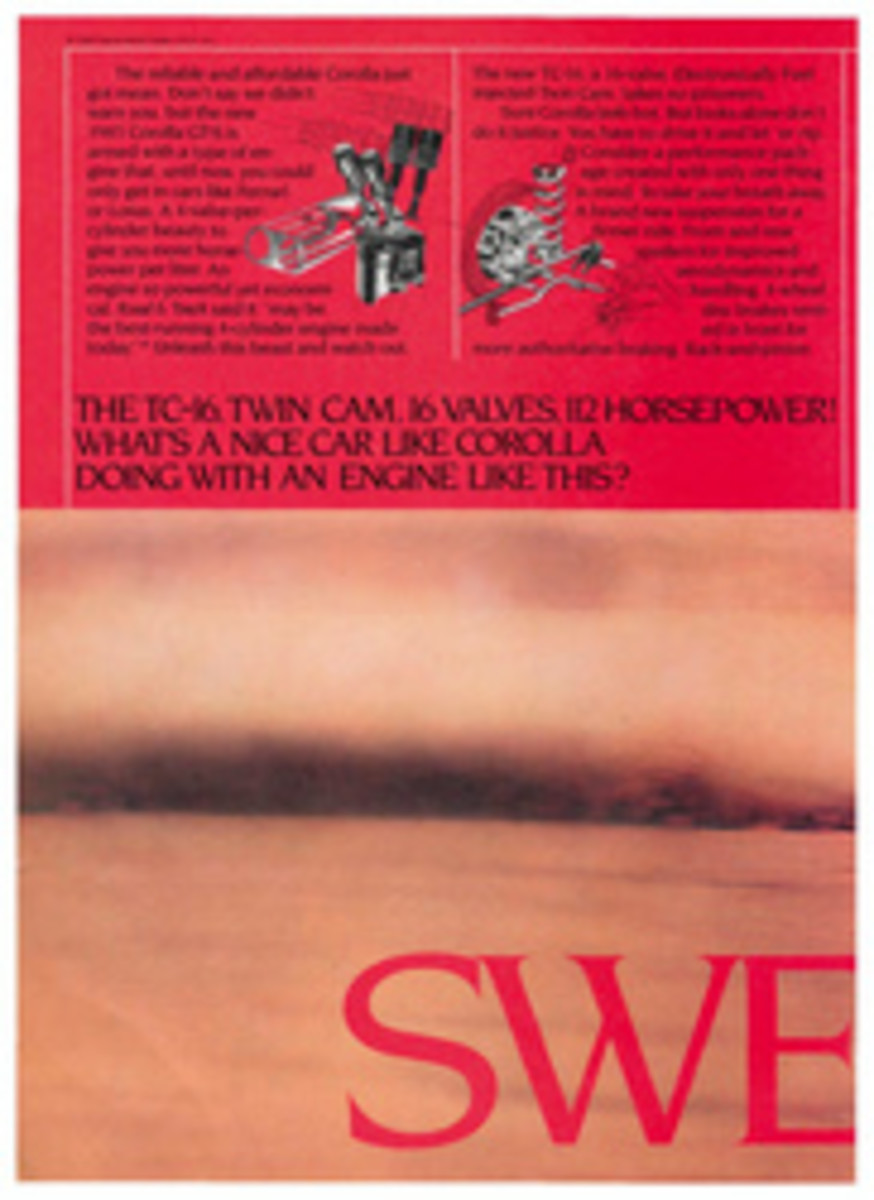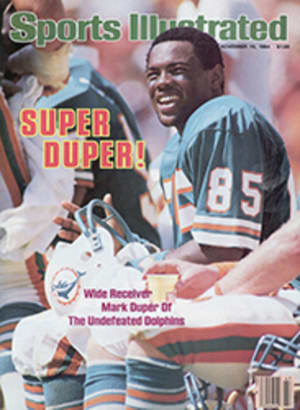
Alors! Look Who's Coming To Dinner
Without the strength of the past, the team may face a choice—to win, or, to be French-Canadian?
—KEN DRYDEN, The Game
For most of this century the Montreal Canadiens were a team like no other. Le Club de Hockey Canadien was a symbol of French-Canadian dominance of hockey. Montreal's stars arrived in a glittering procession: Georges Vezina, Aurele Joliat, Maurice and Henri Richard, Jean Beliveau, Guy Lafleur—French-Canadians who played hockey with a kind of patriotic fervor.
And with them came the Anglo-Canadians—George Hainsworth, Doug Harvey, Tom Johnson, Dryden, Larry Robinson—stars of the first magnitude in their own right, but they seemed to shine a little less brightly than their Gallic counterparts. Known to the Canadian French as Les Habitants or, with reverence, Nos Glorieux, the Canadiens rank with the Yankees and the Celtics as pro sports' leading dynasties, having won 22 Stanley Cups. But they haven't won the Cup since 1979, and they're determined to get back on track, even if that means radical changes in the team's traditional ethnic and national character.
The voice of singer Bruce Springsteen booms out of the stereo speakers in the Montreal apartment shared by Chris Chelios and Tom Kurvers:
I'm a cool-rockin' Daddy in the U.S.A.
Born in the U.S.A.
Born in the U.S.A.
Chelios and Kurvers, both 22, are not rockin' daddies. They're rookie defense-men with the Canadiens. But both were born in the U.S.—Chelios in Chicago, Kurvers in Minneapolis—and they are among a record six Americans, five of them former college stars, on the Canadiens this season. Chelios played two seasons for Wisconsin before joining the U.S. Olympic team and then going to the Canadiens in March. Kurvers played four seasons at Minnesota-Duluth and won the 1984 Hobey Baker Award as the best college player in the country.
The other Americans who are making the historic bleu, blanc et rouge look more like red, white and blue are third-year defenseman Craig Ludwig of Eagle River, Wis., who played at North Dakota; second-year defenseman/forward Kent Carlson of Concord, N.H. via St. Lawrence University; five-year veteran forward Chris Nilan of Boston and Northeastern University; and rookie center Alfie Turcotte of Milford, Mich. and the Portland (Ore.) Junior A Winter Hawks. For the first time ever, the Montreal roster lists as many Americans as it does French-Canadians.
But more than merely being "on the team," three of the Americans—Chelios, Kurvers and Ludwig—are key figures in the surprising early-season surge of the Canadiens. After coming off their worst season in 33 years (35-40-5) and being picked to finish fourth or fifth in the five-team Adams Division in many preseason polls, at week's end Montreal was 8-3-2, No. 2 in the Adams Division, and unbeaten at home (7-0-1). With little of the goal-scoring power they enjoyed in the past (Lafleur was the club leader last season with a modest 30), the Canadiens have thus far successfully compensated for their so-so offense (48 goals in 13 games and no player among the league's top 20 scorers) with the NHL's second-best defense (only 38 goals allowed).
Chelios, Kurvers and Ludwig are three of the six defensemen most often used by coach Jacques Lemaire, patrolling blue lines that years ago seemed the private domain of Serge Savard, Guy Lapointe and Jacques Laperriere. Indeed, it was not so long ago that the possibility of Americans anchoring the Canadiens' defense would have seemed extremely remote. But though the arrival of the Americans in Montreal was sudden, it also was inevitable.
"This all started in 1968, when the NHL eliminated the rule that used to let the Canadiens have the rights to the top two French-Canadian players," says Savard, now the club's G.M. "In the old days it was easier to build a great team."
Had the league not eliminated that rule, the Canadiens might today boast veteran superstars Denis Potvin (New York Islanders), Marcel Dionne (L.A.) and Gil Perreault (Buffalo); players in their prime like Mike Bossy (Islanders), Ray Bourque (Boston) and Denis Savard (Chicago); and the league's most exciting rookie since Wayne Gretzky, Pittsburgh's Mario Lemieux.
The rule is what Dryden was referring to when he wrote of "the strength of the past," a strength that, while it lasted, was overwhelming. "Now we have to draft our players like everyone else, and we'll go for the best no matter where they are from," says Savard.
"Our fans would rather have us win in English or in Chinese than lose in French," says team president Ron Corey.
That Montreal had made its decision to go for the best player regardless of nationality was obvious at the NHL's June entry draft. Savard used Montreal's first-round pick, the fifth overall, to claim Petr Svoboda, an 18-year-old defector from Czechoslovakia, while two excellent French-Canadian defensemen (J.J. Daigneault, drafted by Vancouver, and Sylvain Cote, taken by Hartford) were still available.
Svoboda is a good skater and stickhandler who, when he adds some muscle to his 6'1", 161-pound frame, should excel in the NHL. But it's the bigger, stronger (6'1", 190), more exciting Chelios who may be just a season or three away from being the next great Montreal defense-man and the team's first U.S.-born superstar. Chelios was claimed in the second round, 40th pick overall, in 1981. He played poorly in the Olympics, but has been a solid performer for Montreal.
"He has the potential to be the best," says Savard. And Savard isn't just whistling Yankee Doodle. After 13 games this season, Chelios has two goals and nine assists, and is first in scoring among the league's rookie defensemen and second on the Canadiens to center Bobby Smith. He is already the regular left point on Montreal's power play, on which Lemaire often teams him with Kurvers.
Wearing a hat to cover a head of hair that had been partly sheared off last week as part of the team's rookie initiation rites, Chelios reflected on his new celebrity. "I was proud," he said, "to be drafted by a team with a history like Montreal's." Though he doesn't speak French—his parents are from Greece and live in San Diego, where they moved when Chelios was 12—he says he had no doubts about being given a fair chance by Montreal or about his ability to adjust to life in a bilingual city. "Fans here want a winner," he says. "They don't really care where you're from."
Says U.S. Olympic team coach Lou Vairo, now an assistant with the New Jersey Devils, "They should love Chris up there. He's Greek and Greeks are just as flamboyant as French-Canadians." Vairo characterizes Chelios, who has a penchant for rushing the puck the length of the ice or suddenly dashing in from the point, as "aggressive, daring and courageous," qualities that are obviously appreciated in Montreal. At a preseason rally at the Place des Jar-dins, Chelios drew cheers that ranked second in volume only to those for Lafleur.
Chelios's ability was well showcased in Detroit on Election Day. Montreal was trailing 3-1 early in the third period when Chelios, on a power play, chased a puck back into neutral ice, whirled toward the Red Wing goal and, just as he approached the blue line and looked as though he would pass off or dump the puck in a corner, suddenly slammed a slap shot off Detroit goalie Corrado Micalef's pads. Smith picked up the rebound for an easy goal. Montreal teams of the past would have gone on to win that game. But, without the scoring punch, these Canadiens lost 4-2.
Chelios and Kurvers have adjusted quickly to playing together. They were first paired as members of the 1981 U.S. Junior National team, and both tried out for the '84 Olympic team. Chelios had an outstanding camp, Kurvers did not.
"Tom took that experience of not making the Olympic team and turned it into something positive," says Duluth coach Mike Sertich, whose team Kurvers captained and led to the NCAA championship game, which they lost to Bowling Green in quadruple overtime. "Tommy stopped taking unnecessary penalties and acquired a remarkable sense of poise." After missing five games because of an Oct. 23 injury to his right eye, Kurvers came back to play an unsteady game in Detroit. But on Saturday in Calgary he scored a shorthanded goal, burying a low slap shot from the top of the left face-off circle as Montreal tied the Flames 3-3.
"Keep 'em coming," says Ludwig of the two American rookies. Ludwig, a big (6'3", 212), easygoing blond Surfer Joe type who plays a punishing physical style and willingly throws himself in front of speeding pucks, has a theory that it's more than coincidence that American college players are making their impact as defensemen rather than forwards. Other Yank defenders: the Islanders' Ken Morrow, Detroit's Reed Larson, Buffalo's Mike Ramsey and Washington's peerless Rod Langway.
"In college you have five practices for every two games, so you get a lot of coaching," he says. "In juniors it might be just the reverse. Lots of games and travel and not as many practices. And defense is a more coachable position."
Kurvers and Chelios agree, and Kurvers points out that the physical style of the WCHA—where all three Canadien Yanks played their college hockey—is similar to that in the NHL.
These days the Montreal dressing room seems loose and fraternal. As a photographer assembles the American players for a group shot, Nilan yells out, "Some of the toughest guys in hockey in this picture."
"Toughest to look at," says veteran forward Steve Shutt, regarding the shaved heads of Chelios, Kurvers and Turcotte.
"You guys going out with girls with a hair fetish or something?" asks Robinson.
The day before, as the rookies were led, naked and blindfolded, to a table to be shorn with electric clippers, there were signs that Canadien solidarity cuts across nationalistic lines. As Robinson led an ashen-faced Svoboda—who at this point was probably wondering why he had defected—down the hall, the veteran said quietly, "Hey, it's all right. We're not going to hurt you." Meanwhile, Nilan had no compassion for his fellow Americans and was cackling with undisguised sadistic glee as he led Kurvers to the table. "I'm here to make sure nothing happens to the Americans. Stick with me, Tommy. Heh, heh, heh."
"It [the rookie shaving] brings the team together," says Lemaire, who willingly looked the other way while the team resumed the hazing that had been banned during the 2½-year reign of former Montreal coach Bob Berry. Though he repeats Savard's dispassionate assessment that the Canadiens are "simply going with the best players," Lemaire, veteran of 12 seasons as a Montreal center, must know that, whatever else happens, 1984-85 will be the season of the passing of that famous torch first mentioned in the 1915 poem by Canadian John McCrae, two lines of which, printed in French and English, adorn a wall in the Canadiens' Forum dressing room. Beneath pictures of former Montreal greats are the words TO YOU FROM FAILING HANDS WE THROW THE TORCH, BE YOURS TO HOLD IT HIGH.
Though it may be passing into some American hands, so far the Canadiens' flame has not flickered.
PHOTO
ANTHONY NESTE
At one rally the cheers for Chelios (24) rivaled those for the great Hab, Lafleur.
PHOTO
ANTHONY NESTE
Roommates Kurvers (left) and Chelios find some echoes of home north of the border.
PHOTO
ANTHONY NESTE
On the power play, the aggressive Chelios doesn't hesitate to fire away from the point.
PHOTO
PAUL BERESWILL
Ludwig (17) may prefer the surf, but he's not too laid-back to block shots in the slot.
PHOTO
ANTHONY NESTE
With 338 penalty minutes in 1983-84, Nilan knows his refs.
PHOTO
ANTHONY NESTE
Les Yankees: (front, from left) Ludwig, Carlson, Kurvers; (back) Chelios, Nilan, Turcotte.

